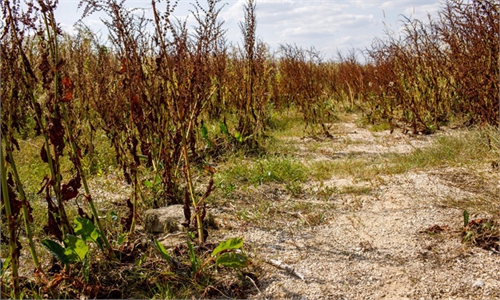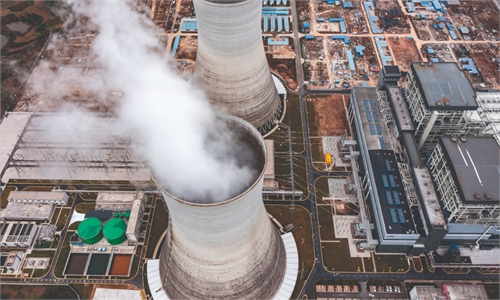A severe drought hitting swathes of Europe is "worsening" and, while rain is helping some regions, accompanying thunderstorms are causing their own damage, EU researchers said in a report on Monday.
The latest monthly analysis by the EU's Global Drought Observatory (GDO) highlighted the risk of ongoing soil dryness caused by successive heat waves since May and a "persistent lack" of rainfall.
It maintained its warning issued with the previous report that nearly half of the EU's territory is at risk of drought, and noted that shriveling rivers and shrinking water sources are impacting energy generation at power plants and reducing crops.
"The severe drought affecting many regions of Europe since the beginning of the year has been further expanding and worsening as of early August," said the report.
Increasing "drought hazard" was predicted for big chunks of Italy, Spain, Portugal, France, Germany, the Netherlands, Belgium, Ireland, Luxembourg, Romania and Hungary, as well as non-EU countries Britain, Serbia, Ukraine and Moldova.
In all, it calculated that 17 percent of Europe was now in its red-alert category, higher than the 11 percent given in July.
"Recent precipitation [in mid-August] may have alleviated drought conditions in some regions of Europe. However, in some areas, associated thunderstorms caused damages, losses, and may have limited the beneficial effects of precipitation," it said.
Mediterranean parts of the EU should expect "warmer and drier than usual conditions" up to November, it said.
Regions hit with rain "anomalies" in the past three months included parts of Portugal, Spain, southern France, central Italy, Switzerland, southern Germany and much of Ukraine.
The GDO report said that normal levels of rain were likely to now come to parts of Europe between August and October but they "may not be enough to fully recover from the deficit cumulated in more than half a year."
Parts of Spain, Portugal and Croatia may continue to suffer "drier than normal weather conditions" however, while dry conditions in the Alps were likely to ease.
The report said that atmospheric conditions linked to the sort of heat waves baking Europe were, over May, June and July, at their highest since 1950.
The latest monthly analysis by the EU's Global Drought Observatory (GDO) highlighted the risk of ongoing soil dryness caused by successive heat waves since May and a "persistent lack" of rainfall.
It maintained its warning issued with the previous report that nearly half of the EU's territory is at risk of drought, and noted that shriveling rivers and shrinking water sources are impacting energy generation at power plants and reducing crops.
"The severe drought affecting many regions of Europe since the beginning of the year has been further expanding and worsening as of early August," said the report.
Increasing "drought hazard" was predicted for big chunks of Italy, Spain, Portugal, France, Germany, the Netherlands, Belgium, Ireland, Luxembourg, Romania and Hungary, as well as non-EU countries Britain, Serbia, Ukraine and Moldova.
In all, it calculated that 17 percent of Europe was now in its red-alert category, higher than the 11 percent given in July.
"Recent precipitation [in mid-August] may have alleviated drought conditions in some regions of Europe. However, in some areas, associated thunderstorms caused damages, losses, and may have limited the beneficial effects of precipitation," it said.
Mediterranean parts of the EU should expect "warmer and drier than usual conditions" up to November, it said.
Regions hit with rain "anomalies" in the past three months included parts of Portugal, Spain, southern France, central Italy, Switzerland, southern Germany and much of Ukraine.
The GDO report said that normal levels of rain were likely to now come to parts of Europe between August and October but they "may not be enough to fully recover from the deficit cumulated in more than half a year."
Parts of Spain, Portugal and Croatia may continue to suffer "drier than normal weather conditions" however, while dry conditions in the Alps were likely to ease.
The report said that atmospheric conditions linked to the sort of heat waves baking Europe were, over May, June and July, at their highest since 1950.



